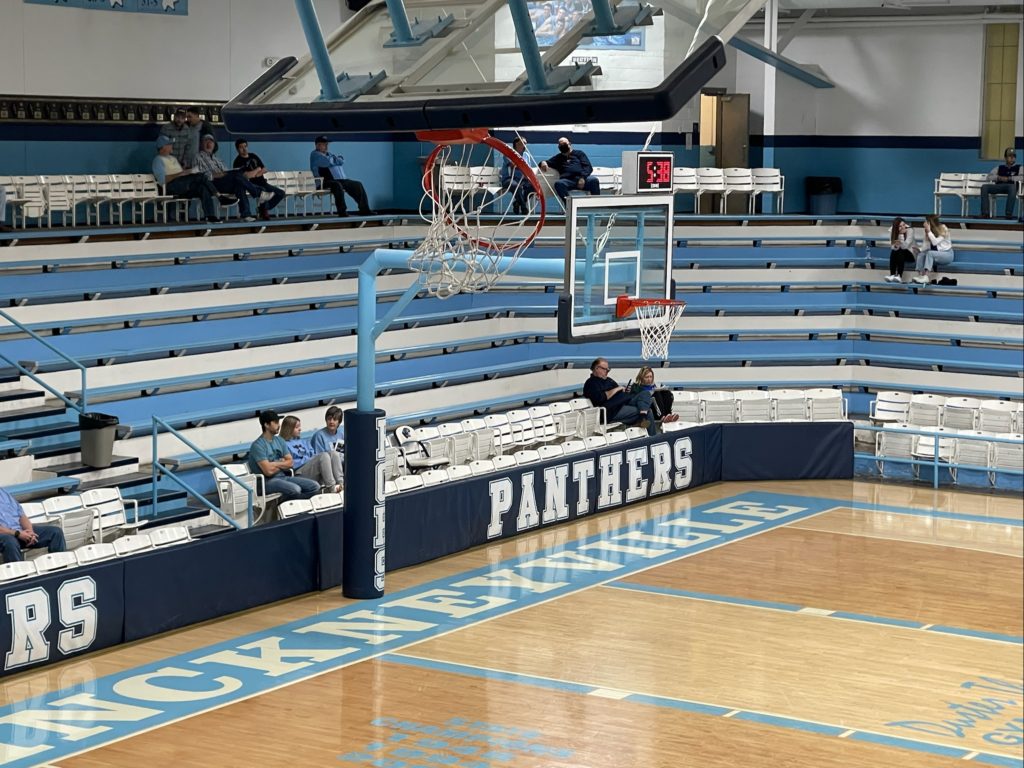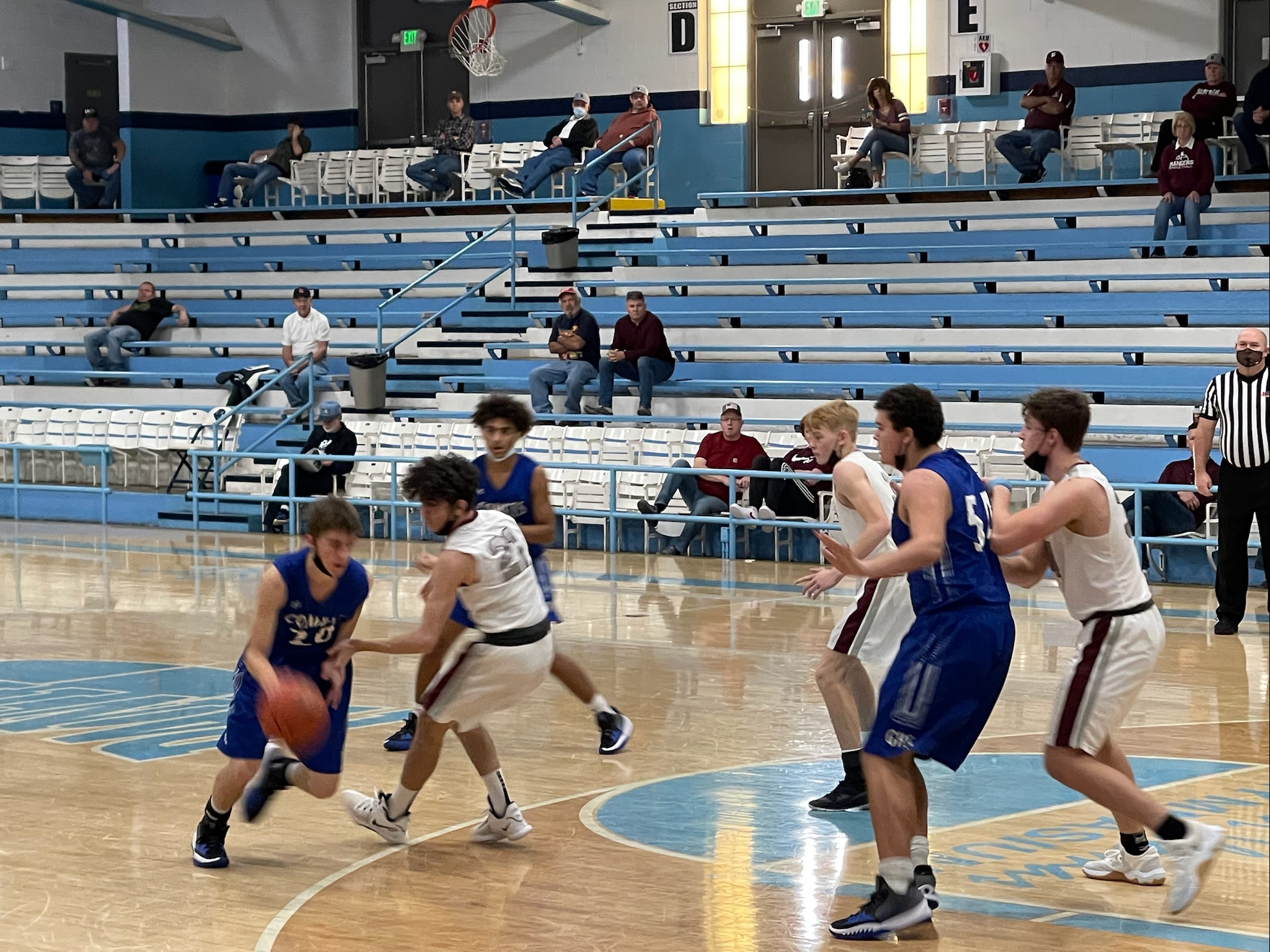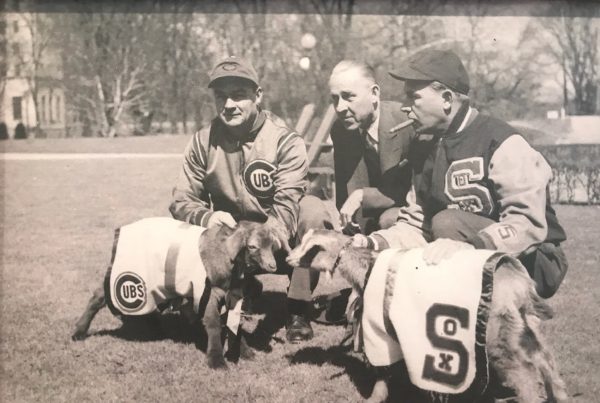Rambler’s Note: This article previously appeared in print during January of 2018 but is included here because it is a trip worth making for any die-hard Illinois high school basketball fan the last week of each December.
I’m sure I will never get to travel to the Holy Land: the birthplace of my faith. But recently I got to experience a little bit of a “pilgrimage” feeling in the sports sense when I covered the Greenville Comets in the 2018 Duster Thomas Hoops Classic held in the storied home gym of the Pinckneyville Panthers: aka Duster Thomas Gymnasium.
To basketball enthusiasts for generations, the Pinckneyville High School program has been held in high regard for several reasons: 1. They have consistently turned out fundamentally sound teams; 2. They have had two hall of fame coaches and have won over 1500 games and made 11 state tournament appearances; and 3. Their home court is one of the crown-jewels of basketball in Illinois and has been since its construction in 1952. Let’s talk a little more about the two latter reasons.
Two Hall of Fame Coaches

Merrill “Duster” Thomas coached the Panthers from 1938 until 1957, when there was only one class of schools (Everybody played for the one and only title.). He amassed a 460-128 won-lost record and a 78% winning percentage. More amazingly was the 10-year stretch from 1947-56 when his teams went to state eight times and made the final four five times. The 1947-48 squad went 33-1 and won the state championship. Teams from 1952, 1953 and 1954 each finished in third place.

From 1975-2007, Dick Corn led the program. He had a 708-260 won-lost record (73%) including state championships in 1994 and 2001, a second-place finish in 1988 and a fourth place in 2006. His 24 regional championships are a state record for Class A coaches.
Both coaches are in the Illinois Basketball Coaches Hall of Fame. The gymnasium is named after Coach Thomas and the court is named after Coach Corn.
Town Builds a Basketball Taj Mahal

After the 1948 title, the townsfolk passed a special bond issue to finance the building of a state-of-the-art gymnasium: a Taj Mahal of hoops so to speak. Imagine for a moment, a school district voting today to build a gymnasium that would hold the entire population of its city and that would be used “only” for basketball, not for multiple uses, and, also, one that would be open year-round for people to play basketball. Can’t imagine it can you? Because it probably could never happen. But it could and did in 1952.
Thomas Gym is an octagon-shaped bowl which you enter from the top (ground level). Fans must then go down to their seats and never walk on the floor or block the view of the game. The four corners have angled seating, making it perfect for viewing from any seat in the house. The top row of seats and the bottom two rows are “backed” seats, which will cost you extra, while the remaining seats are bench style.
The waiting period to get one of the fancy seats is the stuff of legend. People have been known to wait many years for their names to rise to the top of the waiting list for these comfy seats. I didn’t ask, but I suspect they are passed down through generations and not let out of the family. Kind of like season tickets at Husker Stadium in Lincoln, NE.
Bowls Give Great Viewing
The first time I went to a basketball game in a bowl was at the Eldorado, IL holiday tournament in the mid-1970s. I thought it was cool, but did not delve into the history behind the facility. Now I know that an architect named Ralph E. Legeman of Evansville, IN came up with this simple solution to a large problem, which was to build a gymnasium that could hold large capacity crowds (like the entire population of Pinckneyville) and keep construction costs down (only the roof and upper walls stand above ground).
Legeman built 27 such bowls for high schools and colleges and licensed 10 others in the 40s, 50s and 60s. Several are located in Southern Illinois.
Beside the shape and size of Thomas Gym, the most noticeable thing is the color scheme. Panther colors include Navy blue and Columbia blue. The colors are proudly displayed on the court, walls, basket supports, seats and other areas throughout the facility. About 20 years ago, I was attending a game between Duke and North Carolina in the ‘Dean” Dome at UNC. Every square inch of that building was “Carolina” blue (powder blue to me): the seats, floors, rafters, air ducts, et al. That was overwhelming; Pinckneyville’s color scheme, only a little less so.
In recent years, in need of a new school, Pinckneyville residents would not allow the gym to be abandoned and the high school moved to a new location. Instead, the new school was built around the Thomas Gym and another multiple use gym was added nearby.
Other “greats” honored here

Allow me to digress for a moment and also mention the tasteful displays of their basketball and other sports successes in the lobby and inside of the gym.
Besides Thomas and Corn, I couldn’t help but notice a special tribute to a former Panther four-sport star named Marion Rushing, who passed away in 2013. He will be remembered by old-time St. Louis football Cardinal fans for playing several seasons for the Big Red. He is also in the SIU Hall of Fame, having won 13 letters there in four sports, the most decorated athlete in Saluki history.
Another athlete noticeable by her overwhelming dominance on the track during her high school years (2005-8) was Kimberly Spencer, who, among other titles, was the 100-meter champ each of her four high school years. She later went on to run for McKendree University.
Obviously, there is more to an event than just the game and Thomas Gym is a prime example of that.





